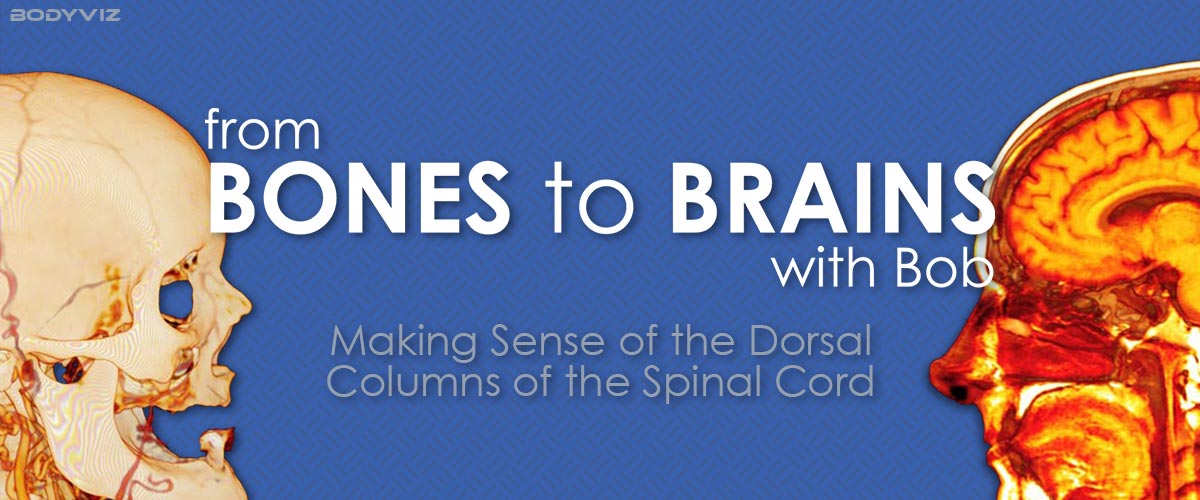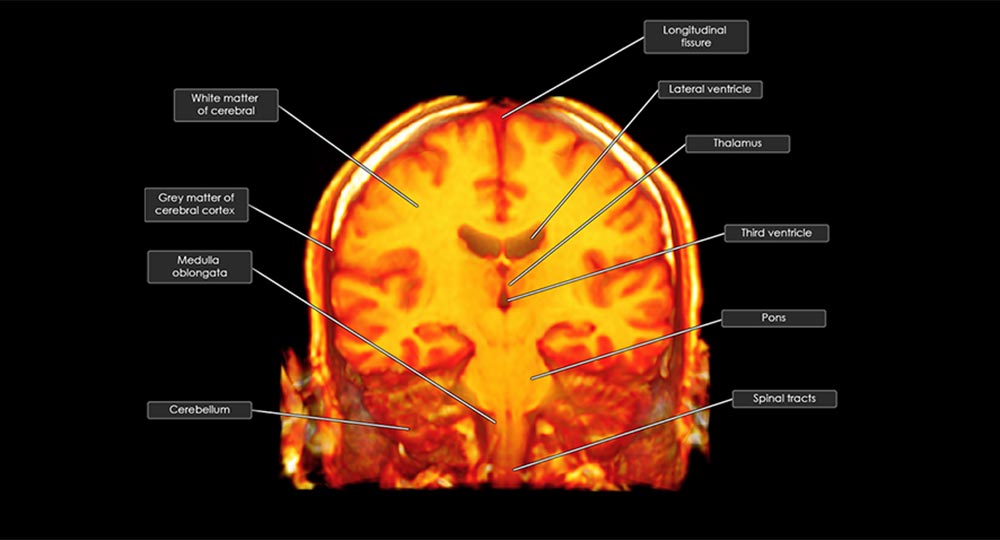Making Sense of the Dorsal Columns of the Spinal Cord
by Robert Tallitsch, PhD | April 24, 2020

I taught Neuroanatomy for most of my 43 years at Augustana College. Over those years, I found that the ascending and descending tracts of the spinal cord caused a varying amount of confusion with my students. However, once students learned and understood the anatomy of the dorsal columns (also termed posterior columns, or the medial lemniscus pathway), the sensory information they carried and how it was anatomically arranged, they developed a solid understanding of the other sensory tracts and their anatomical variations. So, let's talk about some of the "general information" we need our students to understand and how we can truly assess their knowledge in an efficient manner.
First, students need to understand some general information about what afferent (sensory) fibers do when they enter the spinal cord. Upon entering the cord most dorsal root sensory fibers:
- initiate spinal reflexes,
- form ascending spinal tracts that are arranged according to sensory modalities, and the medial-lateral rule,
- are somatotopically arranged within the spinal tract,
- will, at some time, decussate to the contralateral side of the spinal cord or brain.
Most long, ascending sensory tracts of the spinal cord follow a general anatomical pattern. In general, sensory spinal tracts are composed of three neurons: a first-order neuron (FON), second-order neuron (SON), and a third-order neuron (TON).
- The soma for the FON is contained within the dorsal root ganglion of the sensory nerve. The distal processes travel peripherally to a receptor.
- The FON central processes enter the spinal cord and typically segregate, forming a spinal tract. Spinal tracts are typically arranged according to sensory modalities and the medial-lateral rule. The medial-lateral rule means that fibers entering the spinal cord from a more inferior level are located more medially within the spinal tract, while fibers entering from a more superior location are located more laterally within the spinal tract.
- Depending upon the sensory tract, the central processes of the FON will synapse with the soma of the SON either within the spinal cord or the brain stem.
- If the sensory information carried within a spinal tract is raised to the conscious level, the SON will synapse with the soma of the TON within the thalamus of the diencephalon. The central process of the TON terminate in the somesthetic areas of the parietal lobes of the cerebral cortex.

Fibers of the right and left dorsal columns follow the medial-lateral rule and are subdivided into two fasciculi on each side of the cord: Fasciculus Gracilis and Fasciculus Cuneatus. Fibers within the Fasciculus Gracilis enter the spinal cord at levels inferior to T6 while fibers of the Fasciculus Cuneatus enter the cord at levels T6 and above.
The FON enters the spinal cord, travels ipsilaterally within the spinal cord, and synapses with the SON within the Nucleus Gracilis (for fibers within the Fasciculus Gracilis) or Nucleus Cuneatus (for fibers within the Fasciculus Cuneatus) of the medulla. The SON fibers decussate immediately to the contralateral side of the medulla, forming a bundle of fibers termed the Medial Lemniscus (ML). The ML fibers travel to the VPL (ventral posterolateral nucleus) of the thalamus, where they synapse with the TON. These TON remain on the contralateral side and travel to the somesthetic cortex of the parietal lobe of the cerebrum.
All dorsal column components are somatotopically arranged and carry fine touch, pressure, vibration and proprioceptive information from mechanoreceptors in the skin, muscles and joints. The dorsal column pathways bring fast and precise information from the skin and musculoskeletal systems about the nature of the stimulus, the exact location of the stimulus, and when the stimulus starts and stops. This type of information is typically described as “what”, “where” and “when”.
Damage to a portion of the dorsal columns will produce, among other possible deficits, agraphesthesia (the inability of the patient to recognize letters or numbers drawn on the skin), paresthesia (tingling and numbness within the affected area), ataxia (a lack of partial or total conscious control of one or more body parts), and/or a loss of conscious joint positional sense. A deficit in joint positional sense is detected when a portion of the body (such as the upper or lower limb) is moved by the examiner while the patient has his or her eyes closed. If positional sense has been lost the patient will not be able to determine where that part of the body is in space without looking.
The side of the body affected by a lesion within one or both of the dorsal columns is determined by whether or not the lesion is found inferior to or superior to the site of decussation of the tract within the medulla. If the lesion is inferior to the decussation the sensory deficit will be ipsilateral to the lesion. However, if the lesion is superior to the decussation the sensory deficit will be contralateral to the lesion. This is why a person with a stroke to the left somatosensory cortex will experience sensory deficits on the contralateral side of the body.
As I have mentioned previously, the key to really knowing anatomical information is the ability to understand and utilize anatomical facts in order to solve complex problems. Therefore, upon completion of this material, I would regularly present my students with several clinical problems dealing with various spinal tracts in class, which would enable me to assess whether or not they truly understood the information presented to them.
Additional Articles